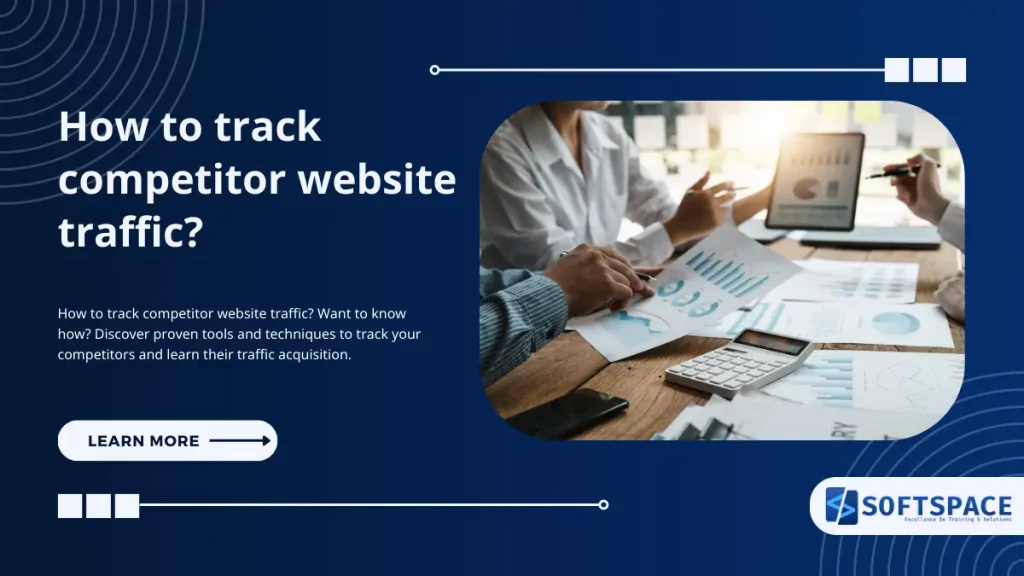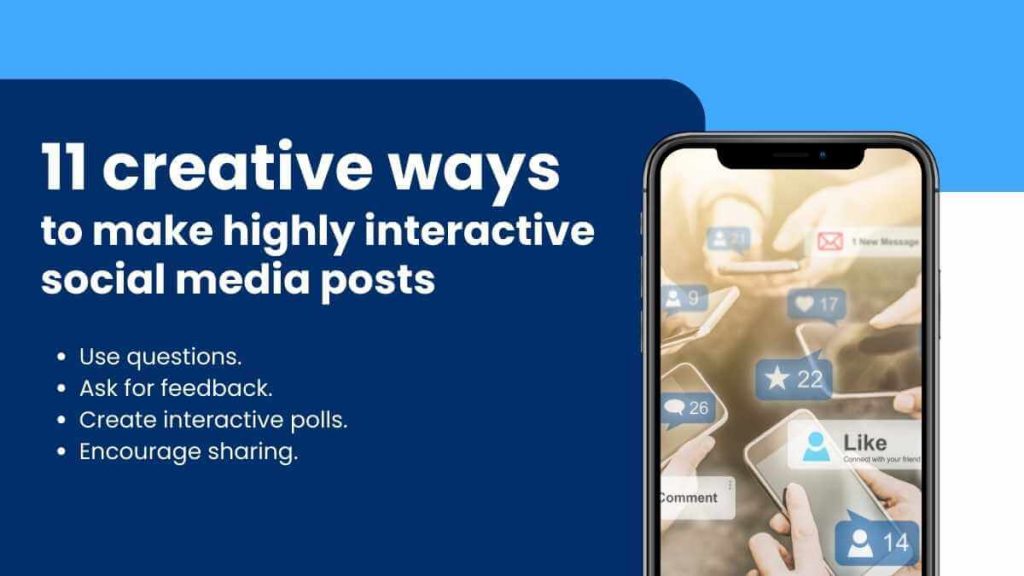Quick Answer: How to Track Competitor Website Traffic
Method 1 (Free): Use SimilarWeb’s free version to get basic traffic estimates, top pages, and traffic sources for any competitor website. Enter their domain to see monthly visits, engagement metrics, and top referring sites.
Method 2 (Professional): Use SEMrush ($129/month) or Ahrefs ($99/month) for detailed data, including:
- Exact keyword rankings and search traffic.
- Monthly organic and paid traffic volumes.
- Top-performing content and landing pages.
- Advertising spend estimates and ad copy.
- Audience demographics and behaviour patterns
What You Can Discover: Monthly visitor counts (±15% accuracy), traffic source breakdowns, competitors’ most valuable keywords, their advertising strategies, and content that drives the most engagement.
Best Practice: Begin with free tools for basic insights, then move to paid tools for deeper analysis and competitive information.

Why Track Competitor Website Traffic?
Analysing competitor traffic gives businesses important information that can turn them into market leaders. Companies that actively watch their rivals grow 12 times faster than those that do not.
Primary Benefits:
- Identify Market Gaps: Find underserved niches worth millions.
- Content Strategy Insights: Discover what content drives engagement.
- SEO Opportunities: Find and know the high-value keywords you might be missing.
- Partnership Networks: Reveal referral sources and chances for collaboration.
- Budget Intelligence: Learn about competitor advertising expenses.
What You Can Discover:
✅ Monthly traffic volumes and growth trends.
✅ Top-performing content and landing pages.
✅ Traffic source breakdowns: organic, paid, social, and referral.
✅ Keyword rankings and SEO strategies.
✅ Audience demographics and behaviour patterns.
✅ Advertising spend and campaign performance.
Best Tools for Competitor Traffic Analysis
🎯 Website Traffic Quality Benchmarks
| Performance Metric | 🏆 Excellent | ✅ Good | ⚠️ Needs Improvement |
|---|---|---|---|
| Average Session Duration | 4+ minutes | 2-4 minutes | Under 2 minutes |
| Pages Per Session | 3+ pages | 2-3 pages | Under 2 pages |
| Bounce Rate | Under 40% | 40-60% | Over 60% |
| Return Visitors | 40%+ | 20-40% | Under 20% |
🛠️ Best Competitor Analysis Tools (2025)
| 🔧 Tool | 🎯 Best For | 💪 Key Strengths | 💰 Monthly Cost | 📊 Accuracy |
|---|---|---|---|---|
| SEMrush Popular | All-in-one marketing analysis | Complete digital marketing suite with 50+ tools | $129+ | 85-95% |
| Ahrefs SEO Pro | SEO-focused traffic analysis | World’s largest backlink database + keyword research | $99+ | 90-95% |
| SimilarWeb Enterprise | Enterprise traffic intelligence | Industry benchmarking & market research | $249+ | 80-90% |
| SE Ranking Budget | Budget-conscious businesses | White-label reporting & affordable pricing | $44+ | 75-85% |
| Ubersuggest Starter | Beginners & small businesses | Simple interface with essential features | $29+ | 70-80% |
💡 Pro Tip for Tool Selection
Start with free versions to test functionality, then upgrade to paid plans for comprehensive competitor intelligence. Most tools offer 7-14 day free trials to explore premium features risk-free.
Free Alternatives:
- SimilarWeb Free: Basic traffic overview
- SEMrush Free: 10 daily queries
- Google Trends: Search trend analysis
- Social Blade: Social media analytics
Tool Selection Guide:
- Large Enterprise: SimilarWeb
- SEO Focus: Ahrefs
- Complete Marketing: SEMrush
- Small Business: SE Ranking
- Getting Started: Ubersuggest
How to track competitor website traffic step by step?
Phase 1: Setup & Competitor Identification (Week 1)
1. Define Your Competitor List
- Direct Competitors (3-5): Similar size and market position.
- Industry Leaders (2-3): Aspirational benchmarks.
- Emerging Threats (5-7): New market entrants.
2. Configure Your Analysis Tools
- Set up competitor tracking lists.
- Set up automated alerts for significant changes.
- Establish baseline metrics for comparison.
Phase 2: Data Collection (Week 2)
1. Traffic Volume Analysis
Key Questions to Answer:
- How much monthly traffic do competitors receive?
- What are their traffic growth trends?
- Which competitors are gaining or losing market share?
- How does seasonality affect their performance?2. Traffic Source Breakdown
- Organic Search (typically 40-60% of traffic)
- Paid Search (5-20% of traffic)
- Direct Traffic (20-40% of traffic)
- Social Media (5-15% of traffic)
- Referral Traffic (5-15% of traffic)
Phase 3: Deep Dive Analysis (Week 3-4)
1. Content Performance Analysis
- Identify top-performing pages.
- Examine content themes and formats.
- Connect content to traffic performance.
- Identify content gaps in your strategy.
2. SEO Intelligence Gathering
- Export competitor keyword rankings.
- Examine their top organic traffic pages.
- Identify keyword opportunities you are missing.
- Check their technical SEO performance.
3. Paid Advertising Analysis
- Estimate monthly ad spend.
- Identify their top-paid keywords.
- Examine ad copy and landing pages.
- Outline their customer acquisition strategy.
Key Metrics to Track
Traffic Quality Indicators
Essential Tracking Categories:
1. Traffic Volume Metrics
- Monthly unique visitors
- Total sessions and pageviews
- Year-over-year growth rates
- Market share percentage
2. Engagement Quality
- Session duration and depth
- Conversion rate indicators
- User retention patterns
- Mobile vs. desktop usage
3. Channel Performance
- Organic search visibility
- Paid advertising effectiveness
- Social media reach
- Email marketing impact
4. Content Performance
- Top landing pages
- Most viewed content
- Content that drives conversions
- Viral or trending content
Advanced Analysis Techniques
Keyword Gap Analysis
Objective: Find valuable keywords that competitors rank for but you do not.
Process:
- Export the top 1000 keywords from competitors.
- Filter by search volume, looking for 1000 or more monthly searches.
- Cross-reference these with your own rankings.
- Identify gaps where competitors rank in the top 10 positions.
- Prioritise based on business relevance and difficulty.
Opportunity Scoring Formula:
Opportunity Score = (Search Volume × Business Relevance × Difficulty⁻¹)Content Gap Identification
Strategy: Create better content for topics that competitors cover.
Implementation:
- Examine the most successful content from competitors.
- Identify topics they cover that you do not.
- Create more comprehensive and better-researched alternatives.
- Optimise for featured snippets and AI responses.
Backlink Source Analysis
Purpose: Find link-building opportunities.
Method:
- Export competitor backlink profiles.
- Identify high-authority referring domains.
- Check and analyse the content that earns the most links.
- Develop outreach strategies for similar sites.
Paid Search Intelligence
Goals: Improve ad spending and targeting.
Analysis Points:
- Estimate competitor ad budgets
- Identify their most valuable keywords.
- Examine ad copy and landing page strategies.
- Find gaps in their paid search coverage.
Turning Insights Into Action
Quick Wins (30-Day Implementation)
1. Content Optimisation
- Update existing content based on competitor analysis
- Create content for high-opportunity keywords
- Optimise meta descriptions and titles
- Improve internal linking structure
2. SEO Improvements
- Target competitor keyword gaps
- Optimise for featured snippets
- Improve page loading speeds
- Enhance mobile user experience
3. Social Media Strategy
- Join networks where competitors are active
- Share content similar to their top performers
- Engage with their audience
- Develop platform-specific content strategies
Medium-Term Strategies (90-Day Implementation)
1. Content Hub Development
- Build resource sections that cover topics thoroughly.
- Develop authority in competitor niches.
- Create pillar pages and topic clusters.
- Establish a content publishing calendar.
2. Partnership Development
- Contact competitor referral sources.
- Build relationships with industry influencers.
- Develop strategies for guest posting.
- Create opportunities for strategic alliances.
3. Technical Improvements
- Improve website speed and performance.
- Enhance user experience design.
- Implement schema markup.
- Optimise conversion funnels.
Long-Term Strategic Initiatives (6-12 Months)
1. Market Positioning
- Develop unique value propositions.
- Build brand authority and thought leadership.
- Create proprietary research and data.
- Establish industry partnerships.
2. Innovation Opportunities
- Identify market gaps that competitors miss.
- Develop new products or services.
- Create innovative content formats.
- Explore emerging marketing channels.
Common Mistakes to Avoid
Common Mistakes to Avoid
Be strategic when interpreting and using data
Focusing Only on Traffic Volume
- Quality matters more than quantity.
- Engagement metrics reveal true performance.
- Conversion rates show business impact.
Copying Instead of Improving
- Don’t just copy competitor strategies.
- Create better alternatives.
- Add unique value and perspective.
Ignoring Data Accuracy Limitations
- Tools give estimates, not exact figures.
- Use multiple tools to verify results.
- Focus on trends instead of exact numbers.
Analysis Paralysis
- Avoid spending all your time analysing.
- Implement insights quickly.
- Test and adjust based on results.
Short-Term Focus Only
- Balance quick wins with a long-term strategy.
- Monitor competitor changes regularly.
- Change strategies based on market shifts.
Neglecting Your Own Performance
- Set baseline metrics first.
- Track your progress against competitors.
- Celebrate improvements and spot gaps.
How to track competitor website traffic? FAQs
Q: How reliable are competitor traffic estimates?
A: Reliability depends on the tool and the size of the website:
- Large sites (1M+ visits): 85–95% reliable
- Medium sites (100K–1M visits): 75–90% reliable
- Small sites (10K–100K visits): 60–85% reliable
- Very small sites (<10K visits): 40–70% reliable
Best Practice: Focus on trends, not exact numbers, when making strategic decisions.
Q: Can I track competitor traffic for free?
A: Yes, with limitations:
- SimilarWeb Free: Basic overview data
- SEMrush Free: Up to 10 daily queries
- Google Trends: Relative search interest
- Social Media Insights: Platform-specific data
When to upgrade: If you need regular monitoring, detailed analysis, or historical data.
Q: How often should I monitor competitors?
A: It depends on your market:
- High-competition markets: Weekly
- Standard B2B: Monthly
- Niche markets: Quarterly
- Seasonal businesses: Every two weeks during peak seasons
Q: What’s the difference between traffic volume and quality?
A:
- Traffic Volume = Total visitors and pageviews
- Traffic Quality = Engagement depth, conversions, and business value
Quality Indicators:
- Session duration over 3 minutes
- Bounce rate under 50%
- Pages per session over 2.5
- Return visitor rate above 30%
Q: Should I focus on direct competitors or industry leaders?
A: Both provide value:
- Direct competitors: Tactical insights and realistic benchmarks
- Industry leaders: Strategic guidance and best practices
- Emerging competitors: Innovation tracking and threat detection
Q: How can I tell if data includes bot traffic?
A: Look for warning signs:
- Sudden unexplained spikes
- Unrealistic engagement (e.g. 0% bounce rate)
- Odd geographic locations
- Overly consistent traffic patterns
To validate:
- Use multiple tools
- Review engagement quality
- Watch trend consistency
- Verify traffic source breakdowns
Q: What should I do if my competitor has significantly higher traffic?
A: Use a strategic approach:
- Analyse their strengths: SEO, content, marketing
- Find your gaps and areas to improve
- Set achievable goals (keywords, content topics)
- Build long-term growth plans
- Monitor your progress relative to them
Q: How can I turn competitor insights into revenue?
A: Focus on revenue-generating actions:
- Target high-converting keywords your competitors rank for
- Optimise content that drives their sales
- Improve UX based on engagement benchmarks
- Partner with their referral sources
- Create better offers tailored to their audience
Conclusion
Competitor website traffic analysis is essential for digital marketing success in 2025. The strategies, tools, and methods in this guide offer a solid foundation to gain competitive insights and turn them into measurable business growth.
🔑 Key Takeaways
- ✅ Start by choosing the right tools and identifying your key competitors
- 📈 Focus on trends and patterns, not just raw numbers
- ⚖️ Balance quick wins with long-term strategies
- 🔄 Keep monitoring and adjusting based on market changes
- 🎯 Turn insights into practical, results-driven marketing strategies
📅 Your Next Steps
Week 1:
✔️ Set up your traffic analysis tools
✔️ Identify and prioritise your top competitors
Week 2:
🔍 Conduct a deep dive into traffic sources, content performance, and engagement metrics
Weeks 3–4:
📊 Identify growth opportunities
📝 Build action plans for SEO, content, and outreach
Ongoing:
🔁 Continue monitoring traffic shifts
👀 Watch for new trends and competitor strategies
⚙️ Optimise your marketing approach regularly
💡 Pro Tip: The goal isn’t to copy competitors—it’s to learn from their success, spot gaps, and create better strategies that lead to sustainable growth for your business.

13+ Yrs Experienced Career Counsellor & Skill Development Trainer | Educator | Digital & Content Strategist. Helping freshers and graduates make sound career choices through practical consultation. Guest faculty and Digital Marketing trainer working on building a skill development brand in Softspace Solutions. A passionate writer in core technical topics related to career growth.




